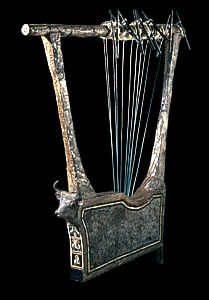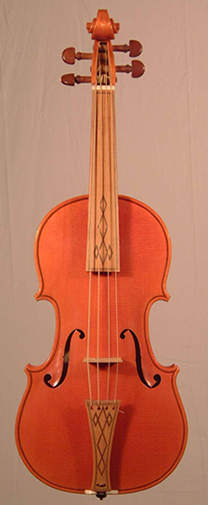A HISTORY OF THE VIOLIN
The violin didn't always look the way it does today. Throughout history, it has changed and evolved from various instruments until it rose up to its current glory. But what sort of changes did it undergo? Where did the violin originate? What did the modern violin's predecessors look like? This extremely truncated history will attempt to answer those questions.
The first predecessors to the violin originated in the 800s, possibly in Asia. These were very simple instruments with strings. However, it was difficult to get them to resonate fully. Soon, new classes of instruments evolved. Among these was the lyre, with its rounded bow that helped with the resonance problem. By the 11th century, bow instruments were becoming common.

From another branch evolved a very, very distant relative of the violin: the rebec.
Shortly after the rebec came about, more strings were added to instruments. Soon, instead of just one or two strings, they had three or four. Tail pieces and bridges were added, forming more advanced instruments more closely related to modern violins. Three new instruments soon formed: the viola da gamba, the lira da braccio, and the viola da braccio. The third of those was played by placing it on the shoulder, and from it, the violin evolved.
The actual "violin" came about between 1520 and 1550. The Baroque violin was first. In its original form, it included strings of animal gut and other differences from today's violins.

